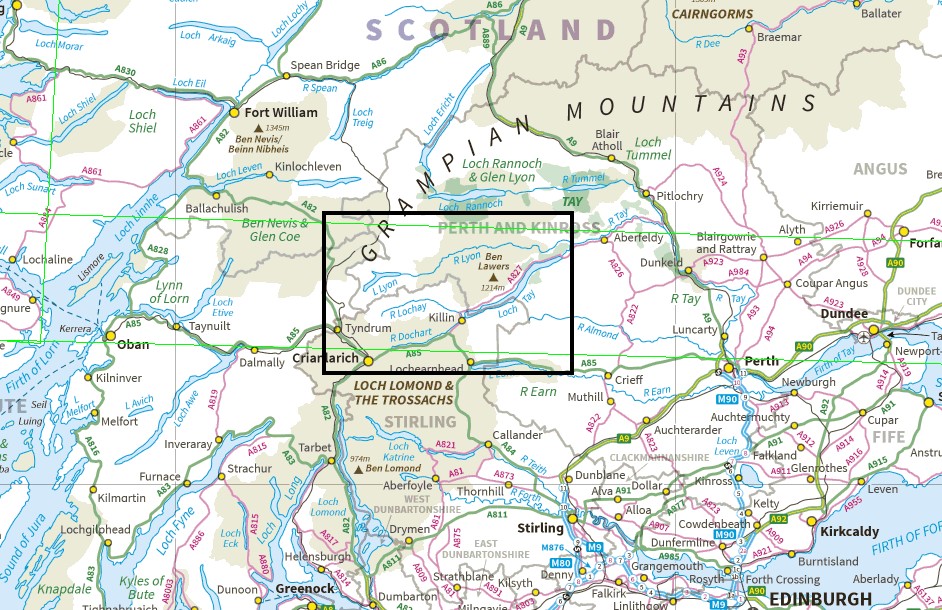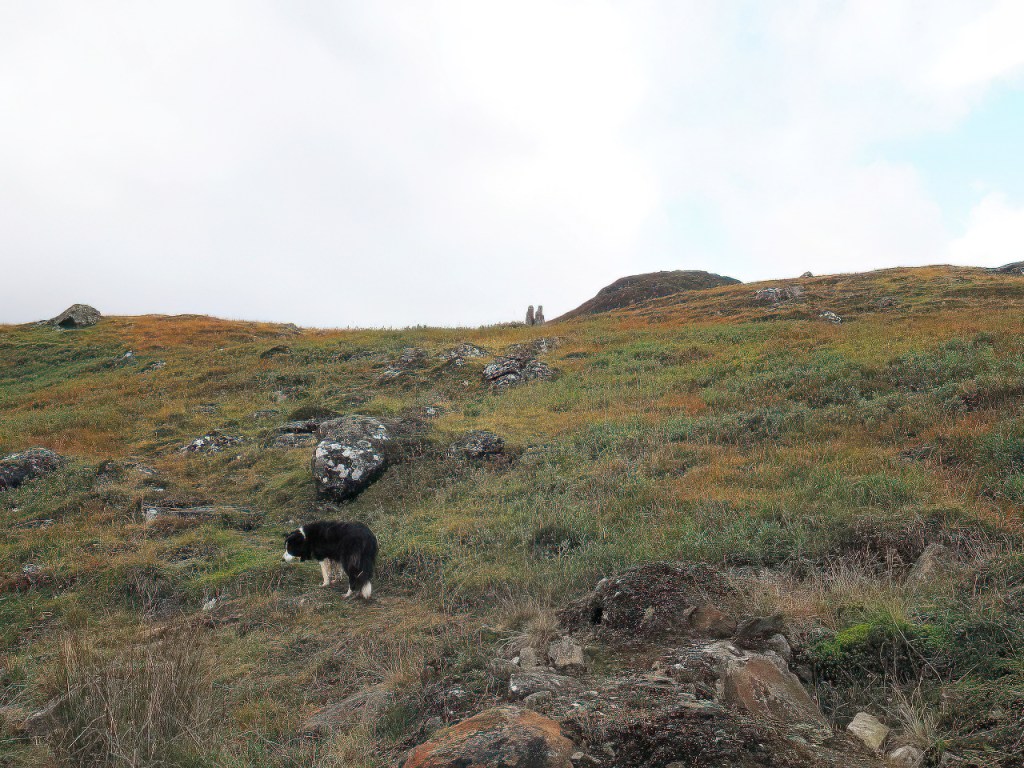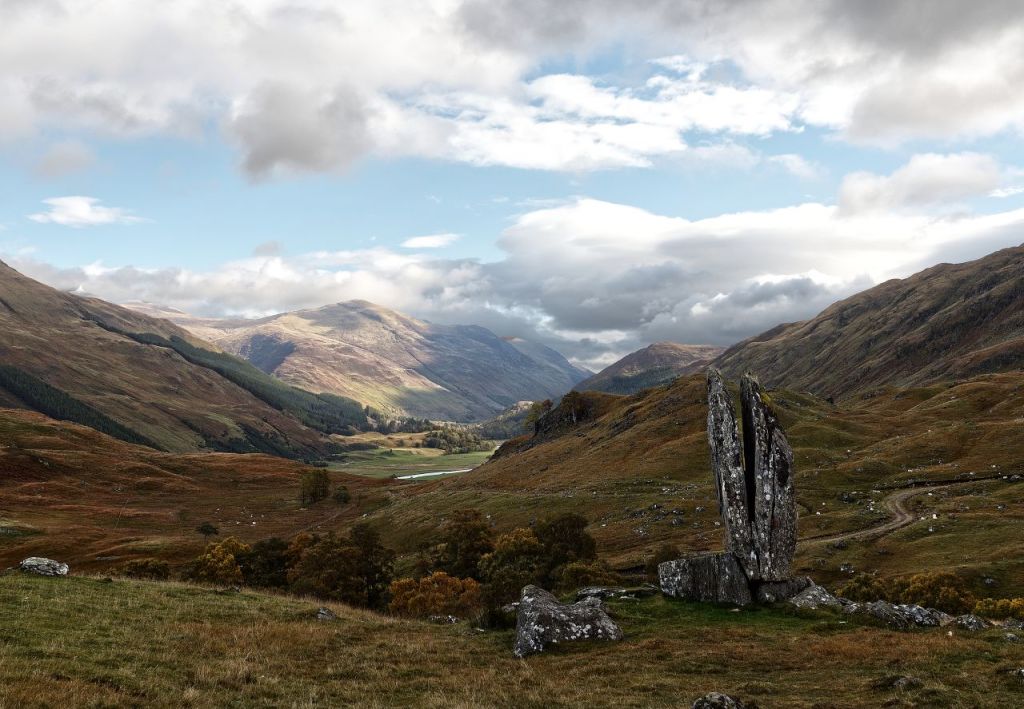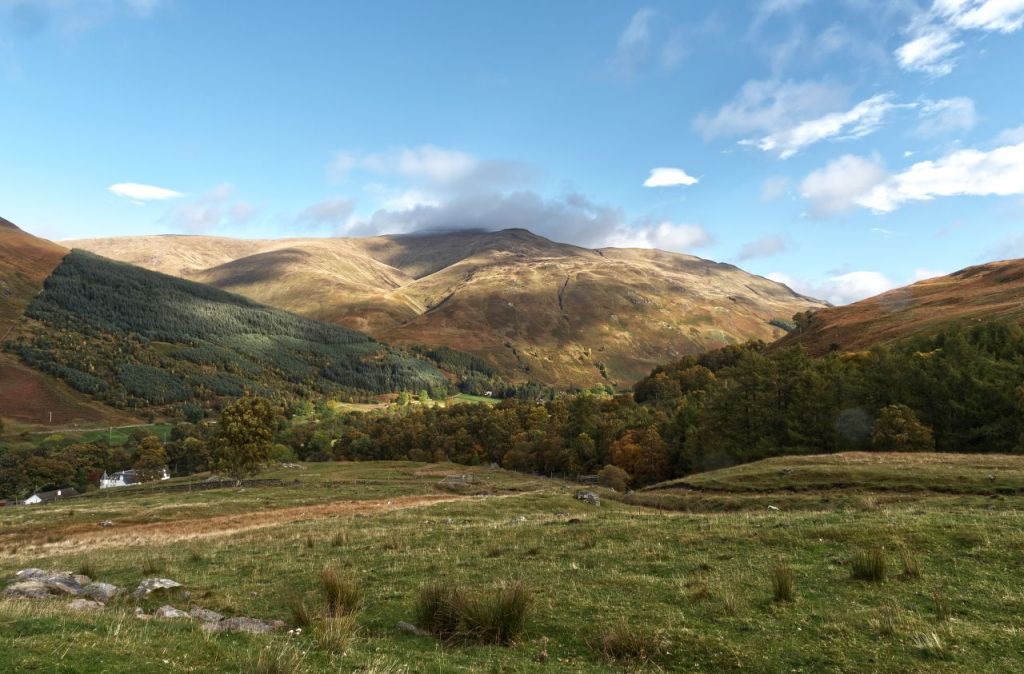

The Scottish historical novelist, Sir Walter Scott, described Glen Lyon as the “longest, loneliest and loveliest glen in Scotland”, yet in all my years of travelling in Scotland I had managed to pass it by. The problem I have with the Scottish Highlands is that there is so much to see and do that I rush on past some real gems. Not this time though – we were going to Glen Lyon to see “The Praying Hands”, otherwise known as “Fionn’s Rock”.

The Praying Hands was originally an upright stone that has been split down the centre, the two halves looking very much like a pair of hands pointing to the sky, as if in prayer. Some believe it to be a glacial erratic stone, deposited by glaciers in an Ice Age long gone, but the precision of the placement makes this unlikely.

A more likely explanation is that the stones were raised by humans in the Neolithic period, which would make the monument about 5000 years old, but if this is the case their purpose is a complete mystery. There is another explanation of course – legend has it that the stone was split in two by an arrow fired by the legendary Celtic hero Fingal, or Fionn mac Cumhaill (Finn McCool in English). So, glacial erratic, Neolithic monument or one of Scotland’s myths and legends – Take your pick!



The trip to see The Hands was a bit of an afterthought when we planned our Autumn 2020 Scottish tour, and as we were passing through the area, we had already decided to include a walk up Meall nan Tarmachan (see post #292). The day after that we went into Glen Lyon the long way round by Fortingall at the eastern end of the glen – the cloudy morning didn’t add much to the autumn colours, but the occasional shaft of sunlight hinted at what might have been.



Once parked up, the walk to the hands was little more than our daily dog walk, but Border Collie ‘Mist’ wasn’t complaining. The first sighting, approaching from below as we did, are the tips of two ‘bunny ears’ – soon afterwards the stones come into full view, looking very much like a pair of praying hands.

The light conditions were not optimal, with bright skies and patches of sunlight fighting against the cloud shadows over what the camera exposure should be set at, but I came away with a reasonable selection of images which were then edited at home to try and make sense of the light conditions. Rather than bore everyone with some of the technical stuff, here are some more views of the stones that speak for themselves. .



Then it was time to head back, which is normally the cue that the post is winding up to a close, but the sun continued playing tricks, with the light changing every few minutes – I think another late trip is definitely on the cards, to catch some more of those autumn colours, plus another look at those mysterious Praying Hands.





Text and images © Paul Shorrock



